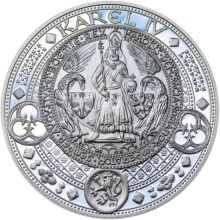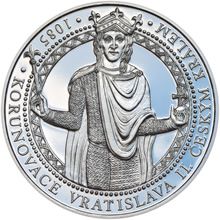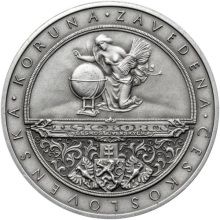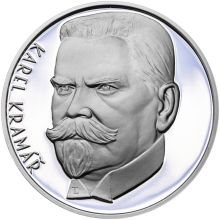The disintegration of Czechoslovakia
HISTORY OF CZECHOSLOVAK CURRENCY.
The danger of aggression by Nazi Germany thwarted promising economic and monetary developments after overcoming the consequences of the global economic crisis. The management of the National Bank decided to deploy its gold reserve and store it in a safer foreign country. Only a small part remained in Prague, which included a rare numismatic collection. Even here, they were not saved later. The political crisis culminated in September 1938. The Munich dictatorship ended twenty years of existence and sovereignty of the first Czechoslovak Republic. By agreement between the representatives of the governments of France, Great Britain and Italy and the Reich Chancellor Adolf Hitler, concluded in Munich on September 29, 1938, large border areas were ceded to Germany. Similarly, on November 2, 1938, an agreement was concluded in Vienna with the Government of Hungary on the transfer of border territory in southern Slovakia and the whole of Subcarpathian Russia, and with the Government of Poland on the transfer of areas in northern Moravia. Czechoslovak money was withdrawn from circulation in the occupied territories and replaced by:
- imperial mark in the ratio of 100 CZK = 12RM
- Hungarian pengö in the ratio 100 CZK = 14.28 pgö
- Polish zloty in the ratio of 100 CZK = 16 zl
On October 6, 1938, Slovakia was declared autonomous and Czechoslovakia was established.
- imperial mark in the ratio of 100 CZK = 12RM
- Hungarian pengö in the ratio 100 CZK = 14.28 pgö
- Polish zloty in the ratio of 100 CZK = 16 zl
On October 6, 1938, Slovakia was declared autonomous and Czechoslovakia was established.
CONTENT
- Origin of the Czechoslovak currency.
- Monetary stabilization.
- Establishment of the central bank.
- National Bank of Czechoslovakia.
- Gold reserve.
- Economic boom.
- Depression.
- The main activities of banks.
- Development of the national economy.
- Art designs.
- Czech banking system.
- The disintegration of Czechoslovakia.
- German occupation of the Czech lands.
- Currency damage caused by the occupation.
- Preparation of post-war monetary policy.
- Inflation and monetary chaos.
- Organization of monetary relations.
- Socialization of finance.
- February 1948 and central management.
- Directive management of monetary relations.
- Monetary reform of 1953.
- Central plan.
- Isolation.
- Reform efforts.
- "Standardization".
- Economic problems.
- Economic transformation.
- Changes in monetary policy management.
- Development of the koruna exchange rate.
- Development of the banking system.
- Development in 1990-1992.
- Division of the Czechoslovak Socialist Republic.
- Origin of the Czech koruna.
- Monetary policy management.
- International cooperation.
- Monetary stabilization.
- Establishment of the central bank.
- National Bank of Czechoslovakia.
- Gold reserve.
- Economic boom.
- Depression.
- The main activities of banks.
- Development of the national economy.
- Art designs.
- Czech banking system.
- The disintegration of Czechoslovakia.
- German occupation of the Czech lands.
- Currency damage caused by the occupation.
- Preparation of post-war monetary policy.
- Inflation and monetary chaos.
- Organization of monetary relations.
- Socialization of finance.
- February 1948 and central management.
- Directive management of monetary relations.
- Monetary reform of 1953.
- Central plan.
- Isolation.
- Reform efforts.
- "Standardization".
- Economic problems.
- Economic transformation.
- Changes in monetary policy management.
- Development of the koruna exchange rate.
- Development of the banking system.
- Development in 1990-1992.
- Division of the Czechoslovak Socialist Republic.
- Origin of the Czech koruna.
- Monetary policy management.
- International cooperation.
JÁ  ZLATÉ MEDAILE.CZ
ZLATÉ MEDAILE.CZ



